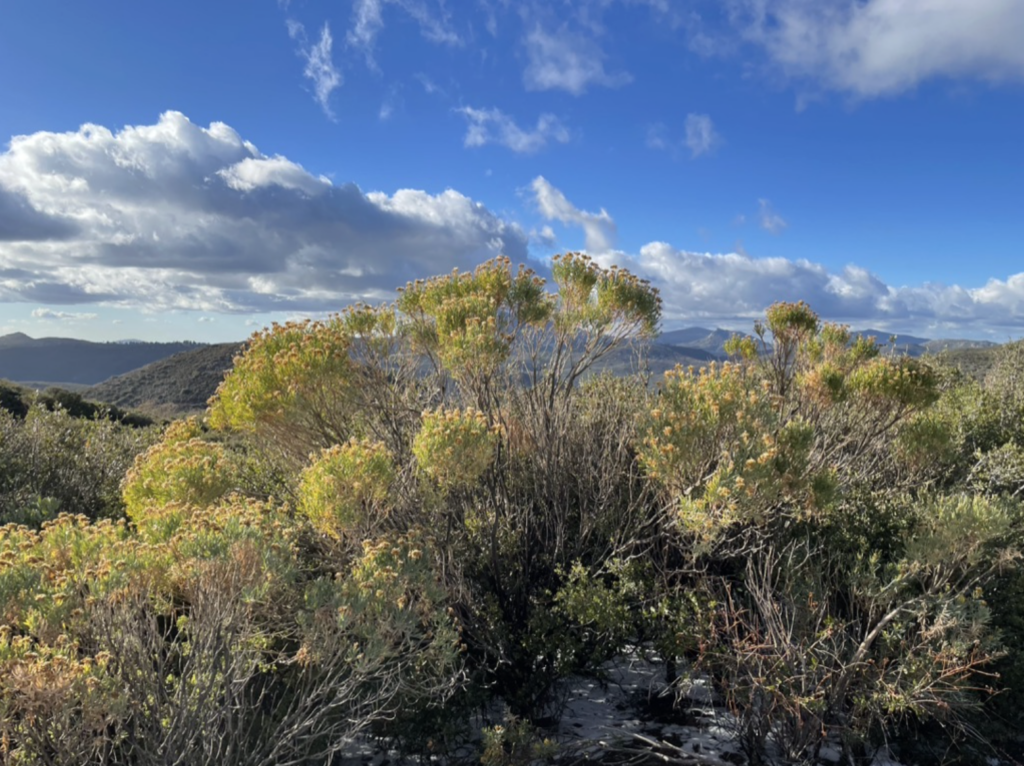
December in the Natural Garden
Happy Holidays! This is the month our conifers stand out in all their glory; many pine species and incense cedar, plus our various cypress and juniper, coast redwood (a California jewel as there are only a couple out-of-state stands in southern Oregon). Of course, in our higher mountains, you’ll find fir and spruce. And oh yeah, big-cone spruce (not true spruce). These ever-present “Christmas trees” adorn our natural areas all year, but this season the hills are also alive with red berried toyon and, in the canyons, aromatic bay trees. Christmas! It’s enough to make you want to celebrate the winter holidays!!
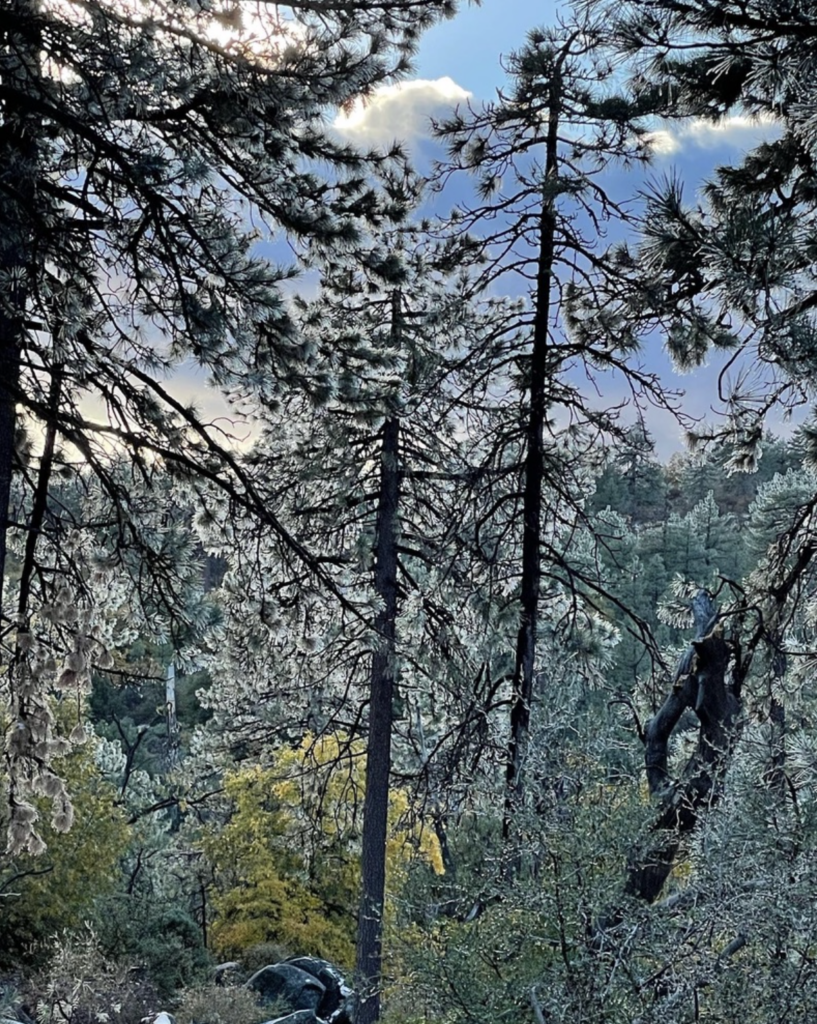
Current events, history, review, and notes
This 3” rain event we got in early November felt right and offered hope for an open door to usher in more storms. But the rest of the month was dry, with a few spells unseasonably warm. We’re still holding out for a good rain year, but our forecast for the next two weeks in southern California has us getting a few scraps of rain left over from the main course being served in northern California. This is fairly typical, as evidenced in Mendocino’s 40” compared to San Diego’s 10” annual average. But in SoCal we also depend on a few storm systems that take direct aim at us, so… any day now, any day now.
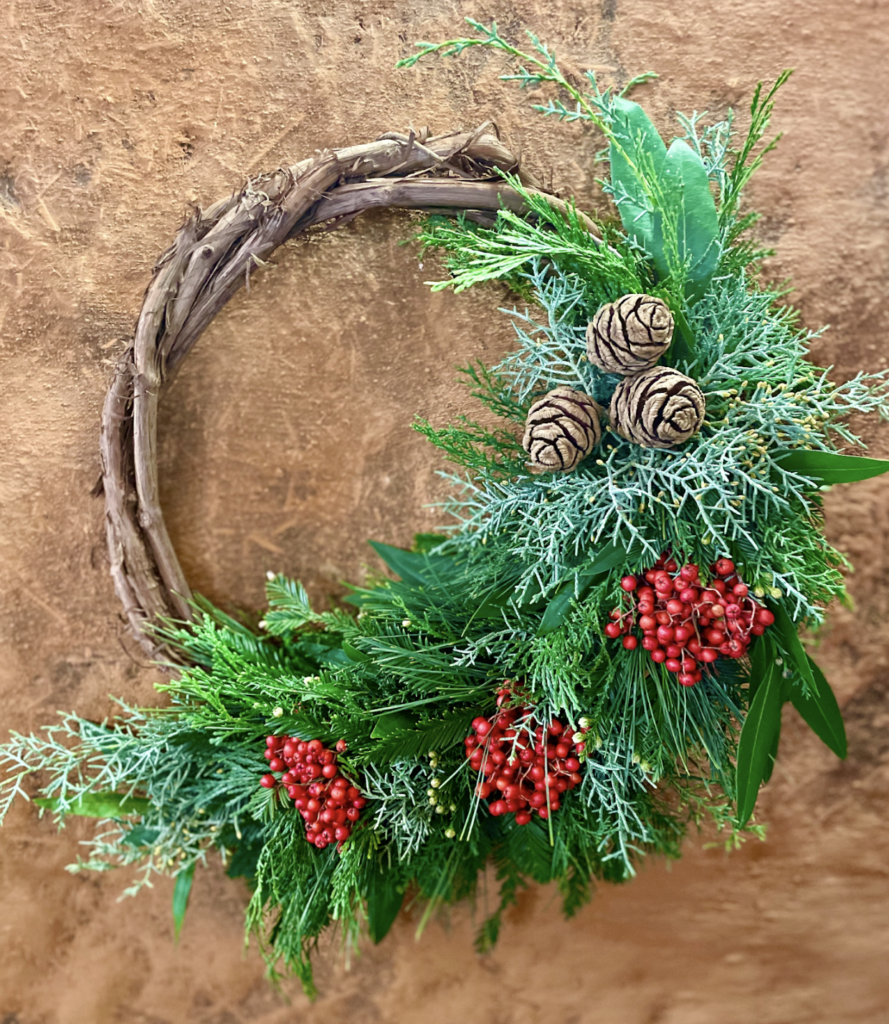
Watering
With the dry Santa Ana winds we saw in November and only light rains on the horizon in December, don’t retire your irrigation system just yet. You may need to provide a Deep Soak in December unless we get one of those direct hits with a 2-3” rain event in the next two weeks or so. Pay special attention to new plantings.
Related to Watering
We’re still in the ideal season to plant new plants, but as long as we’re being kept on hold for the soaking rains, be prepared to water individual plants and new plantings. Is this the new normal for southern California winters?
Pruning
See last month’s newsletter for reassurance that in fall and early winter, pruning is both safe and beneficial. This is an ideal time to shape and thin virtually every and any shrub you might determine could use it.
Weeding
With cold soils and scant rains, weeds should be only a minor issue right now. With the soil moistened, weeds are easy to pull.
Mulching/Top Dress
See November 2022 newsletter. Being one of the busiest months for activity in the natural garden, a lot of what you find in last month’s installment can be applied this month as well.
Feeding
October and November were the best months (fall) for applying an all-purpose organic fertilizer. If you missed that window, you can feed your plants now. The next opportunity will present in the period April thru mid-June, depending on this winter’s rains and the actual weather next spring. Stay tuned.
Troubleshooting – Varmints, Pests and Diseases
Most insects’ life cycles have dramatically slowed with the short days and cold weather. You still might see aphids on the new growth of Salvia. You can blast them off with the hose or spray with an organic insecticidal horticultural soap or Neem oil.
There is a sneaky little disease which causes branch dieback and occasional plant death on a few sub-shrub types. It’s called downy mildew, a complicated fungus that at this time of year attacks at night. It thrives where you find excess overhead moisture and poor air circulation, especially on sub-shrubs with fuzzy leaves. Attacking the leaves and stems, not the roots, can affect buckwheats, sages, Abutilon, Atriplex and the gray-leafed Encelia (E. farinosa).
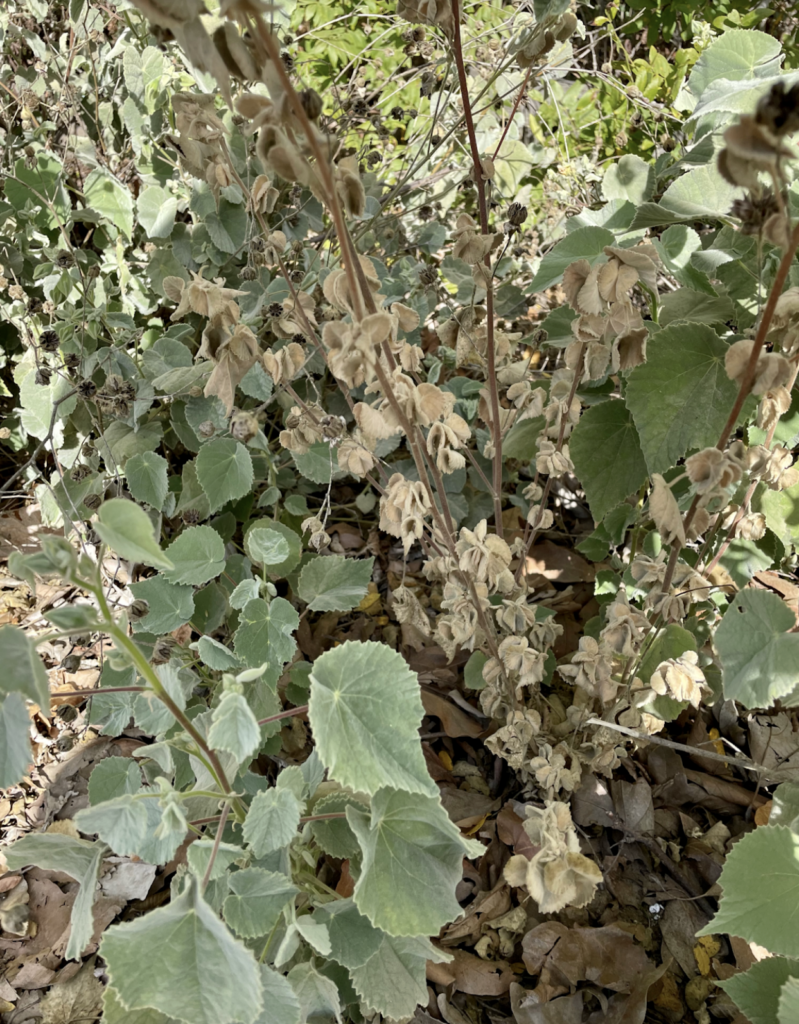
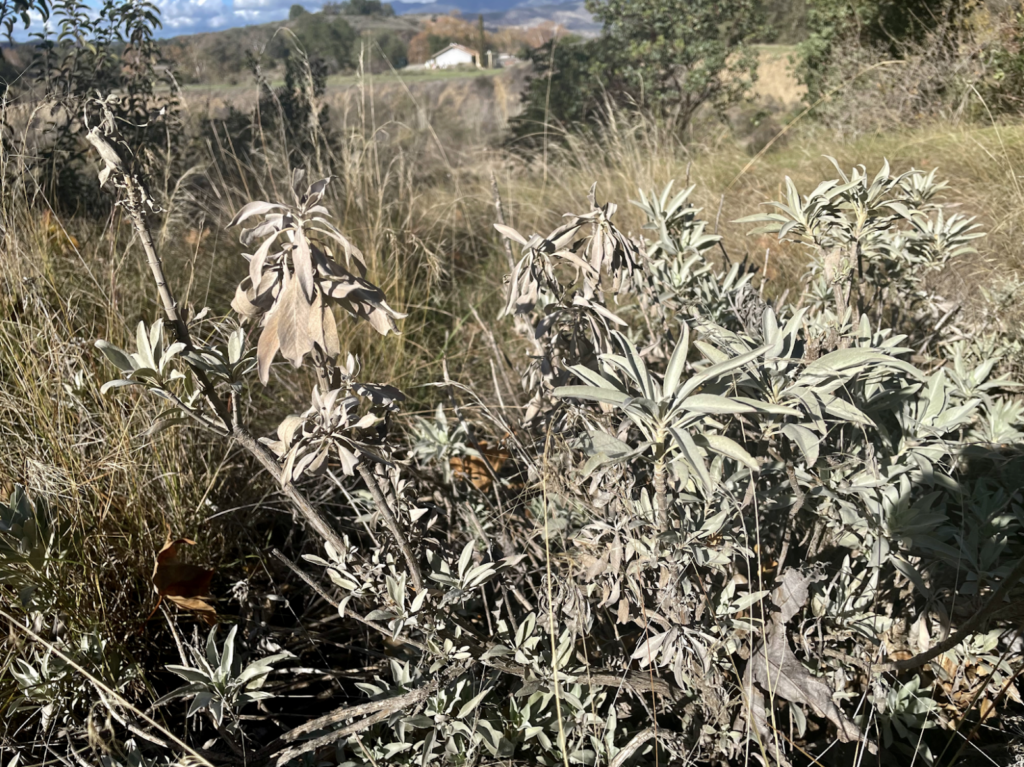
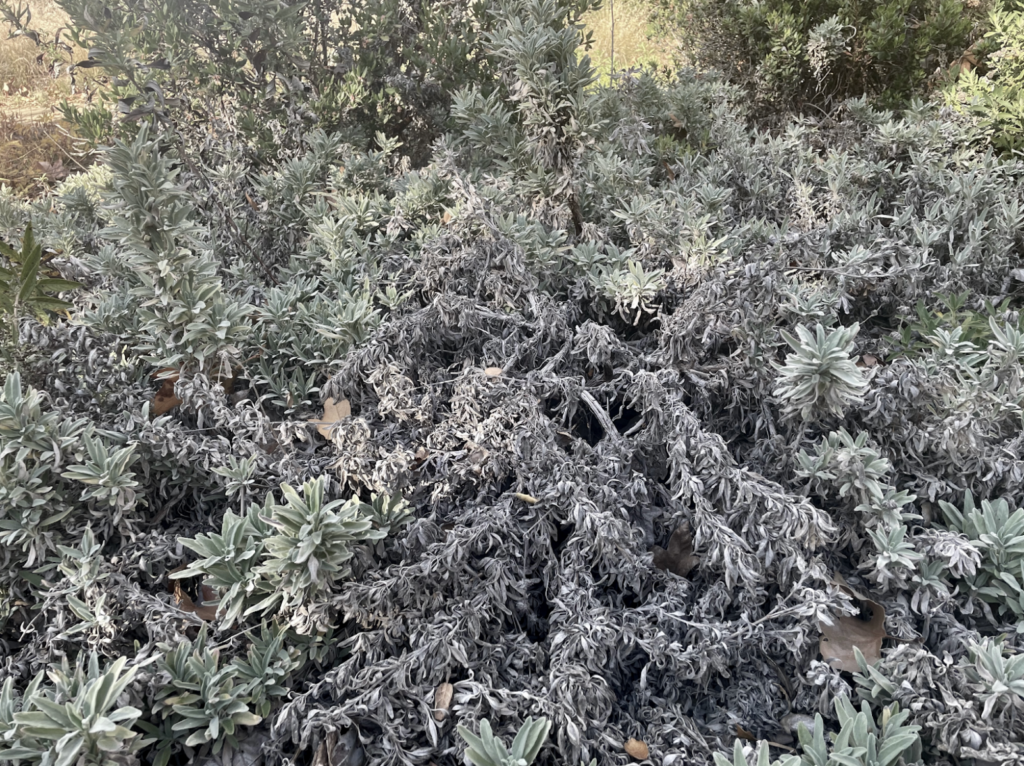
To prevent downy mildew, limit overhead watering, especially late in the day. Refreshing Sprinkles are not necessary for the winter unless you do them early enough for the leaves to dry well before nightfall. Thin the plants and branches to allow better air circulation. Neem oil can be applied at first signs of downy mildew to prevent its spread.
If you find downy on your plants, prune the dead branches out, and discard them in the trash. Then clean up all dead organic matter from under the plant. To prevent spreading the disease, sanitize your shears between cuts by dipping them in a 10% bleach solution or cleaning them with alcohol or Lyson spray.
Annual Wildflowers
It’s not too late! Since the rains seem to be delayed, if you missed the October/November seed sowing window, get those seeds in as soon as possible. We have several wildflower seed blends available. You just scratch up a little ground and toss the seed out as if you were feeding chickens. Never fed chickens? It’s like sowing flower seeds.
Adding New Plants
Hands down, fall, winter, and spring, are the best seasons for planting native plants. We’re so encouraged to see so many of you taking plants home for your gardens. Thank you for visiting us! Planting during this time of year is pure joy, especially since success is almost guaranteed. Come on over! We’re adding new plants to our inventory every day. Be sure to watch our planting video HERE (How to Correctly Plant a Plant). Our recommendation for mixing an all-purpose organic fertilizer plus bone meal in each planting hole will make your new plants super happy.
Phytophilia
Literally translated as “brotherly love of plants,” this new section in our monthly newsletter will specifically address the “sixth sense” we can develop in our relationship with plants in general and specifically with plants in our gardens. This month, we’re seeing many plants taking much-needed rest. Deciduous trees are still dropping their colorful leaves, many drought resistant shrubs are relaxing their defenses in preparation for rain, and in places where the mornings are frosty, grasses and forbs are putting on their winter garb with a few ice crystals occasionally providing seasonal adornment.
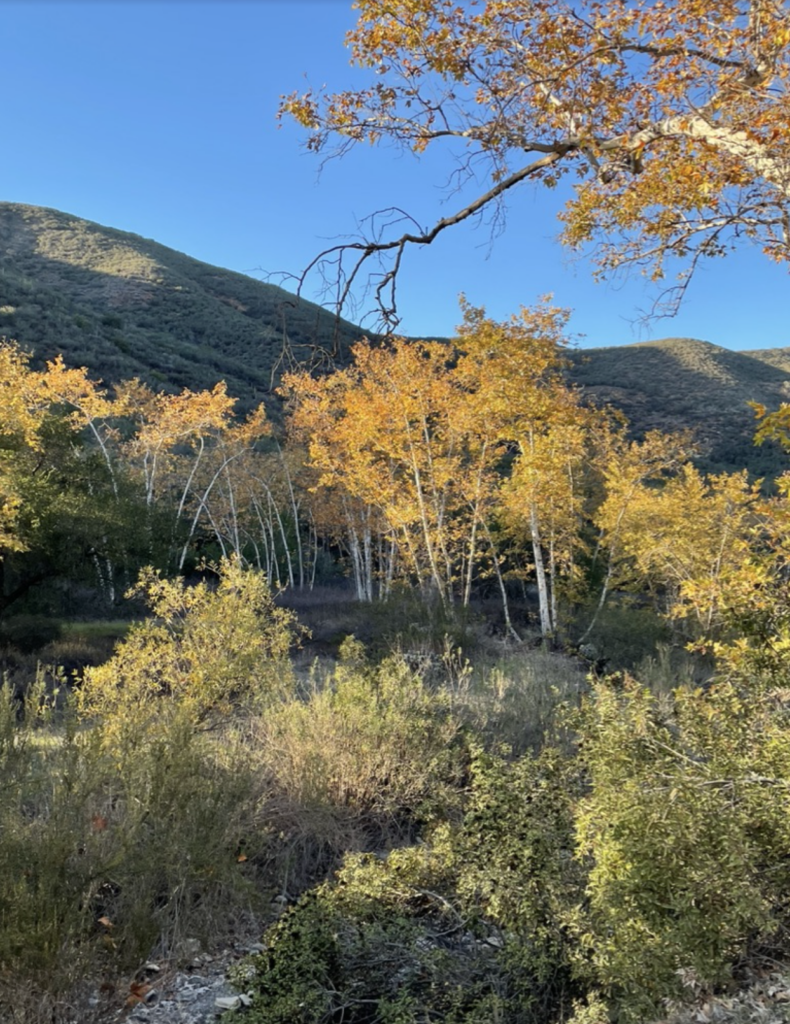
Important Review
We still need soaking rains
Don’t neglect new plantings
It’s ok to prune, feed, add mulch if necessary
Downy mildew is a problem
Still time to sow seeds
Great time to plant
Many plants are taking a rest
Engage
Every time I find myself crawling around in a garden, one of my favorite refrains comes to mind, “My best gardening has been done on my knees.” It’s true. And come to think of it, some of my best exploring as well.
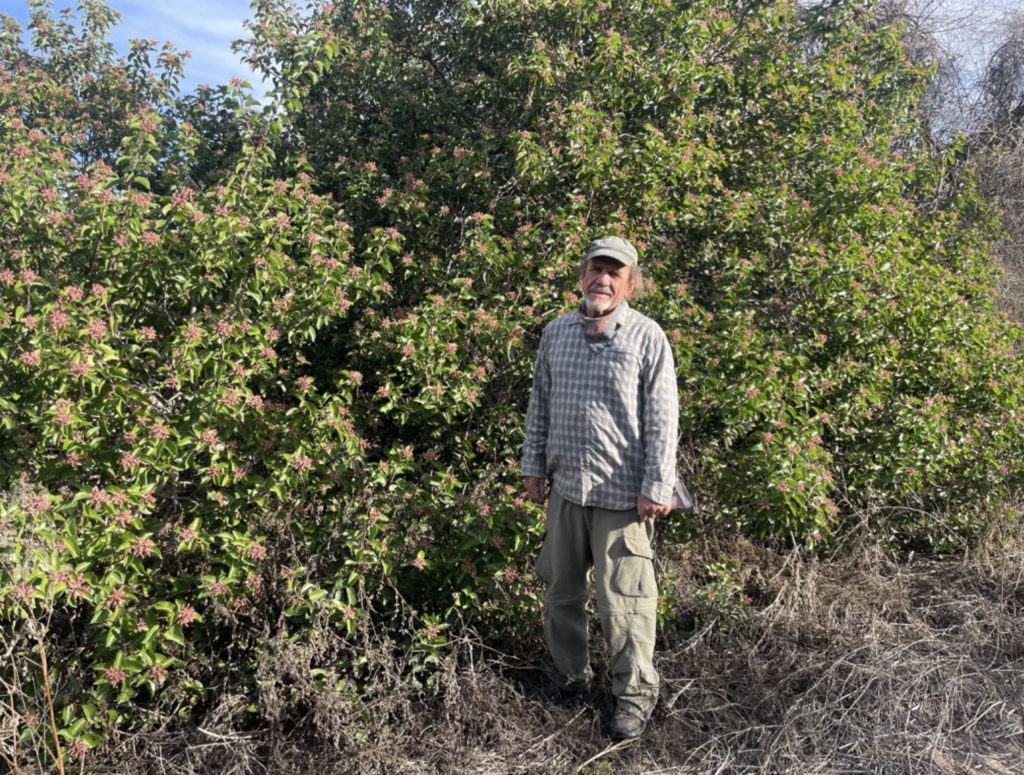
Recently I was so impressed by one of the largest sugar bush plants (Rhus ovata) I have ever seen, and I needed to get to the center of this matter. I crawled under the skirt to find the two main trunks supporting a big cloud of branches. The leaf litter, wonderfully alive and spongy, as well as the sheer massiveness of the shrub, spoke to the fact that there had been no fires here for a very long time. Suddenly, a little wren flitted about, scolding me for my intrusion. I answered in a soft tone, assuring her that I wouldn’t stay long.
Adjacent to the sugar bush, a huge woodrat’s (Neotoma fuscipes) nest under an elderberry (Sambucus mexicana) beckoned an approach, also on hands and knees. The nest was taller than an upright person, though it was impossible for me to stand next to it for a selfie. Woodrats pass their nest on and on (and on and on), so I was literally kneeling before a monument of sticks, stems, and leaves that represented dozens of generations and perhaps 50+ years, of twigs, leaves, branches, and natural debris, (estimated from the apparent age of the elderberry), each piece meticulously placed to form this huge dome laced with its maze of chases and tunnels, all leading to the several specialized rooms, pantries, sleeping quarters, and entrances/exits woodrats are so famous for. You could not have seen it from outside the tree’s canopy.
Another day back home, I was planting a few plants and scooting around like a crab, my pincers busy out front… carefully backfilling the holes, grading the area with a little stick I had found, building basins, tucking the plants in, and watering… Oh, look! A millipede, worth closer inspection, I say, with amazing rhythms in leg movement as it slowly moved about. Not to mention the smell of the rain moistened soil and the joy of setting new plants in.
So many things we miss as we stand and walk around, but when we assume a kneeling posture (recognized universally to symbolize humility, surrender, submission, and reverence), a whole new world opens to us. For sure, my best gardening has been done on my knees.
After all, we just throw our pants into the washer and dryer, and they’ll come out of the laundry just in time for our next adventure.
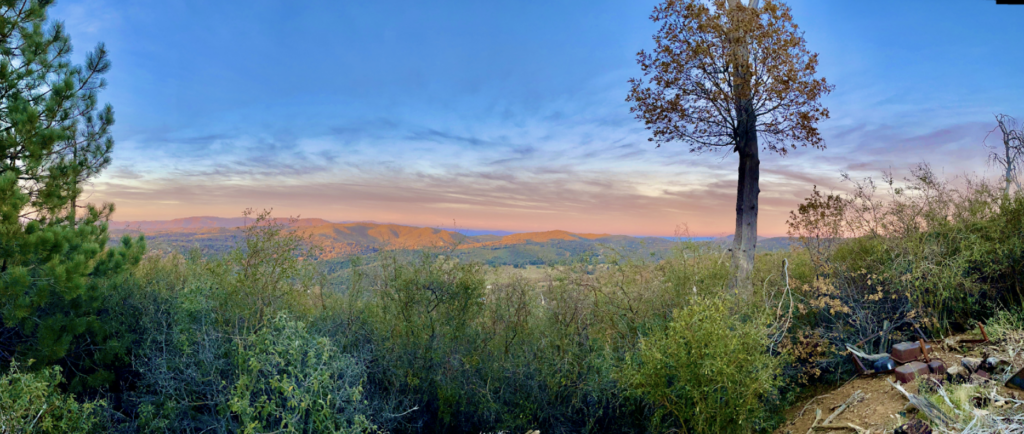
Hey, we’re in a new year! Let’s start makin’ it! Humbly.
From the DECEMBER Natural Garden,
Mike Evans
Questions? Help is just one call or one email away. Call (949) 728-0685 or email (with pictures if you like) our special helpline: gardenhelp@californianativeplants.com